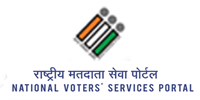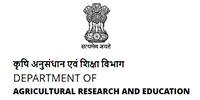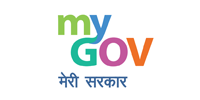Food and Nutrition
A diet which is balanced both qualitatively and quantitatively that means it provides all nutrients required by in a body consisting of each food group like cereals, pulses, green leafy vegetables, other vegetables, fruits, meat, fish, egg, roots and tubers, milk and its products, sugar and jiggery, fats and oils, etc.
Food can be made balanced by incorporating locally available low cost nutritious food stuffs in their diets. The availability of these nutrients becomes easier by growing nutrition garden in home stead consisting of fruits, green leaves and vegetables, by rearing livestock (cows, poultry birds, goat/sheep, etc.). Here, a farm woman can plan a balanced diet with proper combination of cereals (rice), pulses (dal), mixed vegetable curry, milk product (kheer), sag, seasonal fruits, non-veg item, etc. In case of vegetarian food, the quantity of cereals and pulses may be increased to compensate the protein requirement.
The following common diseases are found among rural children due to lack of balanced diet.
| Name of diseases | Occurs in deficiency of |
|---|---|
| (i) Beri-Beri | Vitamine ‘B’ (Thiamin) |
| (ii) Cheilosis | Riboflavin |
| (iii) Glossiest | Riboflavin |
| (iv) Goitere | Iodine |
| (v) Kwashiorkar | Protein-calory mal nutrition |
| (vi) Marasmas | Protein-calory mal nutrition |
| (vii) Night blindness | Vitamin ‘A’ |
| (viii) Rickets | Vitamin ‘D’ |
| (ix) Scurvy | Vitamin ‘C’ |
The following common symptoms are found due to lack of balanced diet.
| Name of diseases |
Symptoms |
|---|---|
| (i) Beri-Beri | Mental depression, oedema, loss of appetite, lean and thin health, cardiac problem, forgetfulness, etc. |
| (ii) Cheilosis | Crack in both sides of the lips with sometimes bleeding |
| (iii) Glossiest | Inflamed and red colour small pimples like eruptions on tongue |
| (iv) Goitere | Enlargement of thyroid gland, both physical and mental growth retardation |
| (v) Kwashiorkar | Swollen face, palm and feet, pot belly |
| (vi) Marasmas | Thin body, rib bones, face looking like old persons |
| (vii) Night blindness | Unable to see in dim light |
| (viii) Rickets | Bow shaped bones in leg and hand, joints of wrist, ankle and knee widens disproportionately |
| (ix) Scurvy | Inflamed, red, swollen and bleeding from gums, delayed wound healing |
The foods rich in vitamin ‘C’ like: all citrus fruits (lemon, amla, orange, pine-apple, guava) should be provided sufficiently along with medicinal supplements.
The protein-calorie rich foods are to be consumed in excess amount, Protein intake should be 4gm per kg of body weight and calorie may be increased by 50%. The other foods suggested are : meat, fish, egg, poultry, milk and its products, pulses (soyabean, rajmah, green and dry peas), adequate amount of cereals and medicinal supplement along with diet.
The suggested weaning foods are: (i) kitchri (porridge), boiled and smashed potato, papaya, banana, carrot, etc, orange juice, ragi kheer, rice kheer to be given from 4 to 5 months while egg yolk, dal, wheat dalia, all fruits and vegetables after 9 to 10 months of age. All the above mentioned foods may be started with two spoons in a day and gradually it should be increased to 50 gm or as per acceptability of the child. At a time, only one type of weaning food should be introduced and if the child has some allergy to it then immediately it should be stopped. Rather may be given after few days.
The common symptoms are as following:
- Body weight reduces than normal
- Skin becomes dried
- Feels breathlessness after a little work
- Loses appetite
- Hairs become weak and easily pluckable
- Mid arm circumference becomes low among infants
The symptoms of anemia are as following:
- The eyelids and nails become pale
- Feels more anxiety
- Feels breathlessness after a little exertion
- Feeling of reeling head
- The nail shapes like spoon in severe cases
Some low cost locally available food stuffs may be used in our daily diet like:
- Ragi: rich source of calcium and iron than rice and wheat
- Guava: more nutritious and rich in vitamin ‘c’ as compared to apple
- Jaggery: more nutritious having energy and rich in iron than sugar
- Mushroom: rich in protein and cheaper than animal protein
Other than these, the locally produced pulses (green gram, black gram, horse gram, bengal gram, kandula, etc), small millets, fruits (banana, mango, pine apple, custard apple, palm, dates, black berry, coconut, bel, ber, jack fruit, etc), local nuts, ground nuts, green leaves (drum stick, amaranthus, palak, mint, sunusunia, madaranga, muthi, etc) should be included in daily diet.
To minimize the loss of nutrients, the following steps may be followed.
- Food should be covered to save the nutrients lost by air
- Extra water should not be discarded to save the water soluble vitamins
- Vegetables should be washed before cutting to reduce nutrient loss through water
- Cut pieces should be big in size
- Some of the germinated grams should be eaten in raw form without cooking to save vitamin ‘C’, riboflavin and iron.
- Peels of certain fruits and vegetables like apple, cucumber, etc should not be removed
- Cooked water from rice should not be discarded which is rich in B-complex and carbohydrates
- Cheese water may be used in preparation of dal or dough
To make the food more tasty and palatable it needs cooking. The various cooking methods are:
- Boiling
- Steaming
- Shallow frying
- Deep frying
- Stewing
- Roasting
- Simmering
- Baking
Steaming is the better method than boiling. Here, loss of nutrients can be reduced. In boiling method, minimum possible water should be used with a measurement so that extra water will not be there to be discarded. Baking and roasting are also better than deep frying where loss of nutrients is minimum.
The food value may be enhanced through:
- Combination of foods like rice + pulse + nuts + vegetable, etc. can make khichiri which provides energy, protein, fat, etc.
- Sprouting or germination of various grams increases vitamin ‘C’ content
- Fermentation of batter to make idli and dhokla enhances vitamin ‘B’
- Substitution of mixed vegetable pulao may be taken in place of plain rice
- Supplementation may be done by addition of skimmed milk, pulses and vegetables with cereal rich diets
- Puffing is a process to puff up cereals to take as breakfast items
- Parboiling of rice increases the ‘B’ group of vitamin which is very less in polished rice
- Liming means to add chuna which enhances calcium to the diet
- Micro-organisms like yeast, bacteria, virus, moulds, etc. spoil the food.
- Moisture is a great factor which facilitates the bacteria to grow and spoil food.
- Enzymes in the food itself contaminate the foods.
- Insects like worms, bugs, weevils, fruit-flies, moths cause extensive damage to food.
Different items from ragi are:
- Ragi pitha (cakes)
- Ragi halwa
- Ragi roti / paratha
- Ragi zau (porridge)
- Ragi pakoda
- Ragi kheer
- Ragi biscuit
Ragi is very rich in calcium which helps for the growth of bones and teeth among children. It also contains high iron. A combination of ragi flour, pulse powder and milk can be given in cooked form to small children in place of ‘Farex’ or ‘Cerelac’ available in market.
- The cooked food should be kept covered. The waste food should also be kept covered and kept away from the main food so that files do not get chance to grow. Sometimes due to indigestion diarrhea may occur, so the food should be cooked properly and be eaten in small quantity to avoid indigestion.
- The surroundings should be neat and clean, so the chances of breeding of files get reduced.
ORS (Oral Rehydration Solution) is required to recover from dehydration. During diarrhea patients loose water, sodium, potassium and energy. ORS is a solution of sodium, potassium and sugar in water to compensate the deficiencies developed during diarrhea and dysentery. It may be prepared by adding sugar, a pinch of salt, little lemon juice in water (boiled and then cold) at home.
Usually both the expectant and lactating mothers suffer from iron deficiency. Therefore, iron and folic acid tablets should be provided to them in addition to iron rich food in their diets. The green leafy vegetables (amaranths, colocasia leaves, knoll-khol leaves, greens, spinach leaves), cereals (wheat, ragi, jowar, bajra, rice flakes), pulses (sprouted), jiggery, animal flesh, organ meat should be included in their daily food habits to be free from lack of iron.
Food adulteration includes the intentional addition or substitution or abstraction of inferior substances which adversely affect the nature, substance and quality of foods. Incidental contamination during the period of growth, harvesting, storage, processing, transport and distribution also occurs.
- Stone, chips may be added to the rice, metanil in pulses, ergot in bajra seeds, coal-tar dye in roasted gram.
- Water and starch may be added to milk.
- Pure ghee may be adulterated with vanaspati, mashed potato with butter, cheap edible oil with vanaspati, agrimonies with mustard oil, etc.
- Artificial dye may be with tea leaves, powdered date seeds or tamarind powder in coffee, etc.
- Chalk or any other dust or dirt in sugar, jiggery with metanil yellow, bura sugar with washing soda may create adulteration.
- Extraneous colouring matter in turmeric or chilly powder, grit in spices, talc powder in cardamom, grit or clay in common salt may be added for adulteration.
- Fenugreek
- Black pepper
- Turmeric
- Ginger
- Onion
- Garlic
- Coriander
- Chilli
- Mustard
- Cardamom
- Sinnamon
- Bay leaves
- Back to previous page
- |
-
Page last updated date:18-04-2024 02:24 PM
 भारत सरकार | Government of India
भारत सरकार | Government of India









